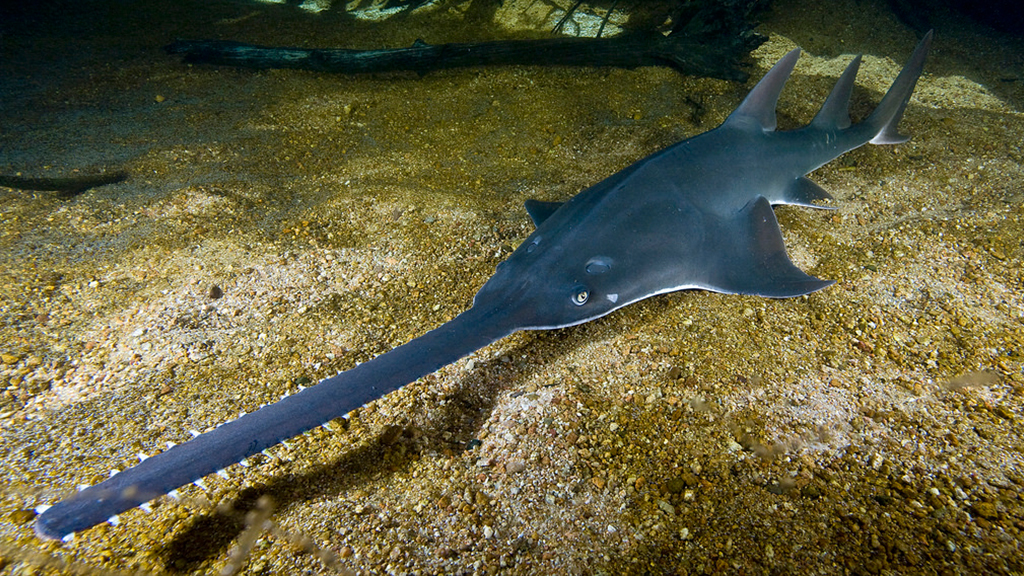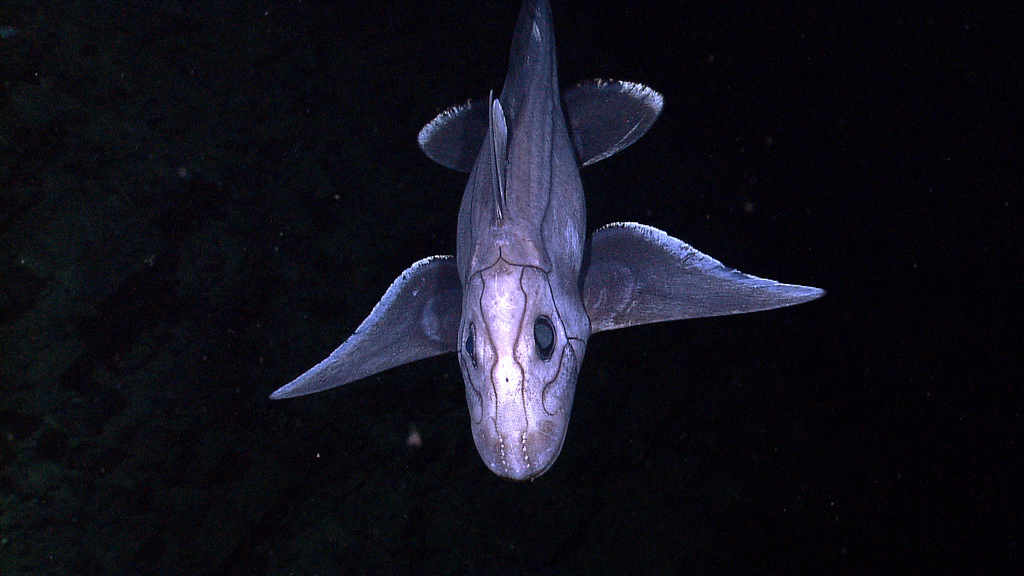Animals You Didn’t Know Were Related to Sharks
Published by Ocean Conservancy
Sharks are one of the most iconic animals in the sea—how many other animals can you identify simply by their fins? Sharks may get a lot of time in the spotlight, but these top predators are just one part of a diverse group of cartilaginous fishes in class Chondrichthyes. Today, I’m here to shed some light on the lesser-known members of the shark’s family tree.
There are a few distinct qualities that set class Chondrichthyes apart. While most vertebrates have a skeleton made of bone, chondrichthyans’ skeletons are made of pliable cartilage, which is still sturdy enough to allow them to grow to large sizes. For example, the whale shark (the largest chondrichthyan) can grow up to 60 feet long! There are more than 1,000 known species of chondrichthyans and the class can trace its evolutionary roots back 400 million years—making some species “living fossils.” They also have placoid scales, or tough, tooth-like scales that cover their bodies, giving the animals a rough, “sandpaper-y” feel.
Enough with the similarities, though—read on to see what makes these shark relatives unique!
Rays


Rays are the largest group of cartilaginous fish species, with more than 600 species known to science. They are recognizable by their flat, kite-like bodies and large “wings,” which are modified pectoral fins. They use these fins to both swim and help bury themselves in the sandy bottom where they wait for prey. People sometimes use “rays” and “stingrays” interchangeably, but that’s not quite accurate—all stingrays are rays, but not all rays are stingrays. Some species of ray have sharp, venomous spines that they use to defend themselves, but others, like manta rays, lack stingers. Although stingray stings are relatively rare, they can happen when unsuspecting people wade into shallow waters where stingrays are hiding. Therefore, it’s recommended that people do the “stingray shuffle” in areas where there might be stingrays (which just involves shuffling your feel along the sandy bottom to avoid stepping on stingrays).
Skates


Skates are technically a type of ray, and are often confused with stingrays because of their similar body shape. Skates have a shorter, thicker tail and do not have a stinger. They’re also often found in cooler, deeper waters, in contrast with the preferred shallow, tropical habitat of stingrays. You may have seen evidence of skates if you’ve ever walked the beach and found a “mermaid’s purse”—these “plastic-y” egg cases hold baby skates (some sharks make similar egg cases).
Sawfish


Sawfish are perhaps one of the easiest fishes to identify—they have a long, flat nose with teeth on each side, just like a saw! This distinctive nose is called a rostrum, and is used to slice their prey and scavenge in the sand. They are similar in body shape to sharks but are actually a type of ray, and they can grow to almost 25 feet in length. You’d be hard-pressed to find one in the wild, as all sawfish species are listed as endangered or critically endangered. Their populations have drastically declined because of habitat loss, hunting for their fins and use in traditional medicines.
Chimaeras


The chimaera (not to be confused with the chimera, a mythological Greek lion/goat/snake hybrid) is also known as a ghost shark or rat fish. These strange, ethereal creatures are typically found at depths of more than 1500 feet, so we know very little about them. They’re found throughout the world’s oceans and tend to feed on invertebrates on the sea floor. Because it’s so dark in the deep ocean, they use both their large eyes and electric signals to hunt for their prey. Like many shark species, they are long-lived and late to reach sexual maturity, meaning they’re particularly at risk to fishing pressure.
Although sharks are the most popular of the chondrichthyans, I thought the other members of the clan deserved some attention too, especially because they are at risk from many of the same threats facing sharks, including overfishing, entanglement in marine debris and habitat loss. Help us protect all chondrichthyans (sharks included) today!
Sign up for our emails!
The post Animals You Didn’t Know Were Related to Sharks appeared first on Ocean Conservancy.
Read the full article at: https://oceanconservancy.org/blog/2019/03/05/animals-didnt-know-related-sharks/


